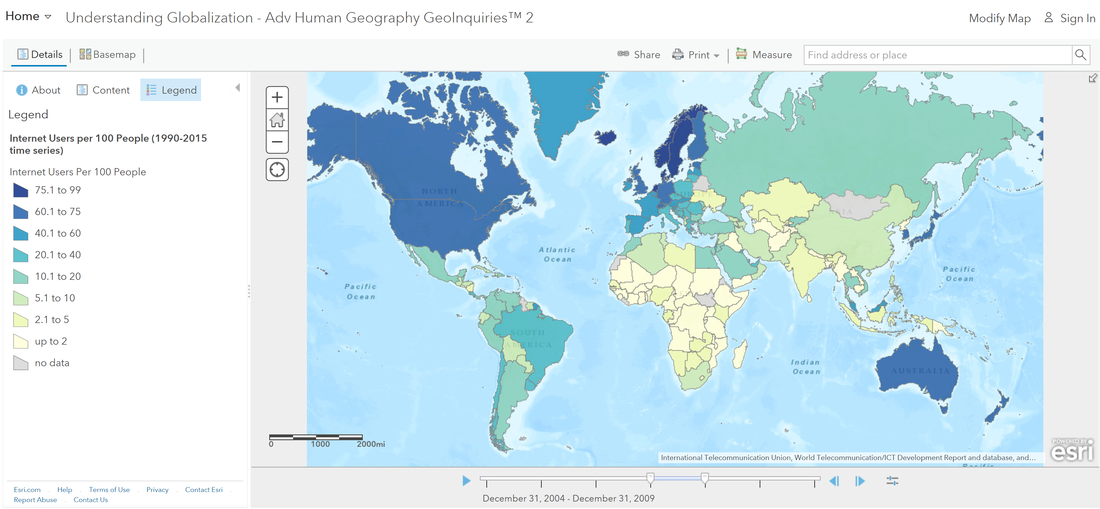How have transportation advancements connected places on earth?
Humans and places are connected on Earth through language, religion, ethnicity, culture, climate, transportation, and more. Globalization can be defined as the increasing connection of economic, cultural, and political characteristics across the world. It provides an opportunity to diffuse ideas, as well as learn about other places (including the cultural landscape).
Step 1: Go to the ArcGIS Online map, Understanding Globalization, and explore the map.
Step 2: With the Details button underlined, click the button, Show Contents of Map (Content).
Step 3: Click the checkbox to the left of the layer name, World Transportation.
Step 4: Zoom to Europe. Analyze the spatial patterns of world transportation networks. Roads cross international boundaries, with some areas have more transportation networks than others.
- How can transportation affect interaction?
Step 5: Press the button, Measure. Press the second button, Distance.
- What is the distance between New York City, New York, and Paris, France?
What makes connections between those two cities hard is long distance and the Atlantic Ocean. The best mode of transportation to connect these two places is by air.
What places on earth have less access to transportation?
Step 6: Zoom out to a global view.
- What spatial patterns do you notice about transportation on a global scale?
Step 7: Turn on the layer, Top 10 Airports. Notice that the top ten airports tend to be where most passengers are located (developed nations). More traditional societies (sometimes called folk cultures) are less influenced by popular culture traits and materials, thus less impacted by globalization.
What advancements in technology have contributed to globalization?
Step 8: Transportation advancements have contributed to creating connections on Earth.
- What transportation technologies bring places of great distance apart, together?
Step 9: Turn on the layer, Internet Users Per 100 People (2016).
- What types of technology worldwide contribute to globalization?
- What do you notice about global Internet access?
- Areas with developed transportation often have a higher proportion of Internet users. (T/F)
Act: What is the future of globalization?
Step 10: Patterns of technology adoption and transportation exist throughout the world.
- People in more developed countries often have more access and can afford luxuries, whereas those living in less developed countries or rural areas have limited access. (T/F)
Step 11: Turn on the layer, Internet Users per 100 People (1990-2015 time series). Note the time-slider beneath the map. Play the time series. Notice how Internet access has changed over time.
Access to advancements in technology, transportation, and infrastructure affect globalization because it creates more uniform landscapes and diffuses cultural traits.

